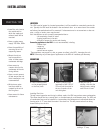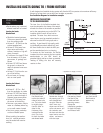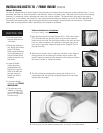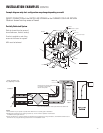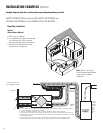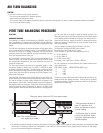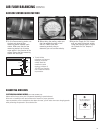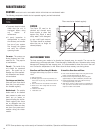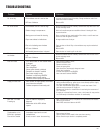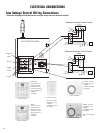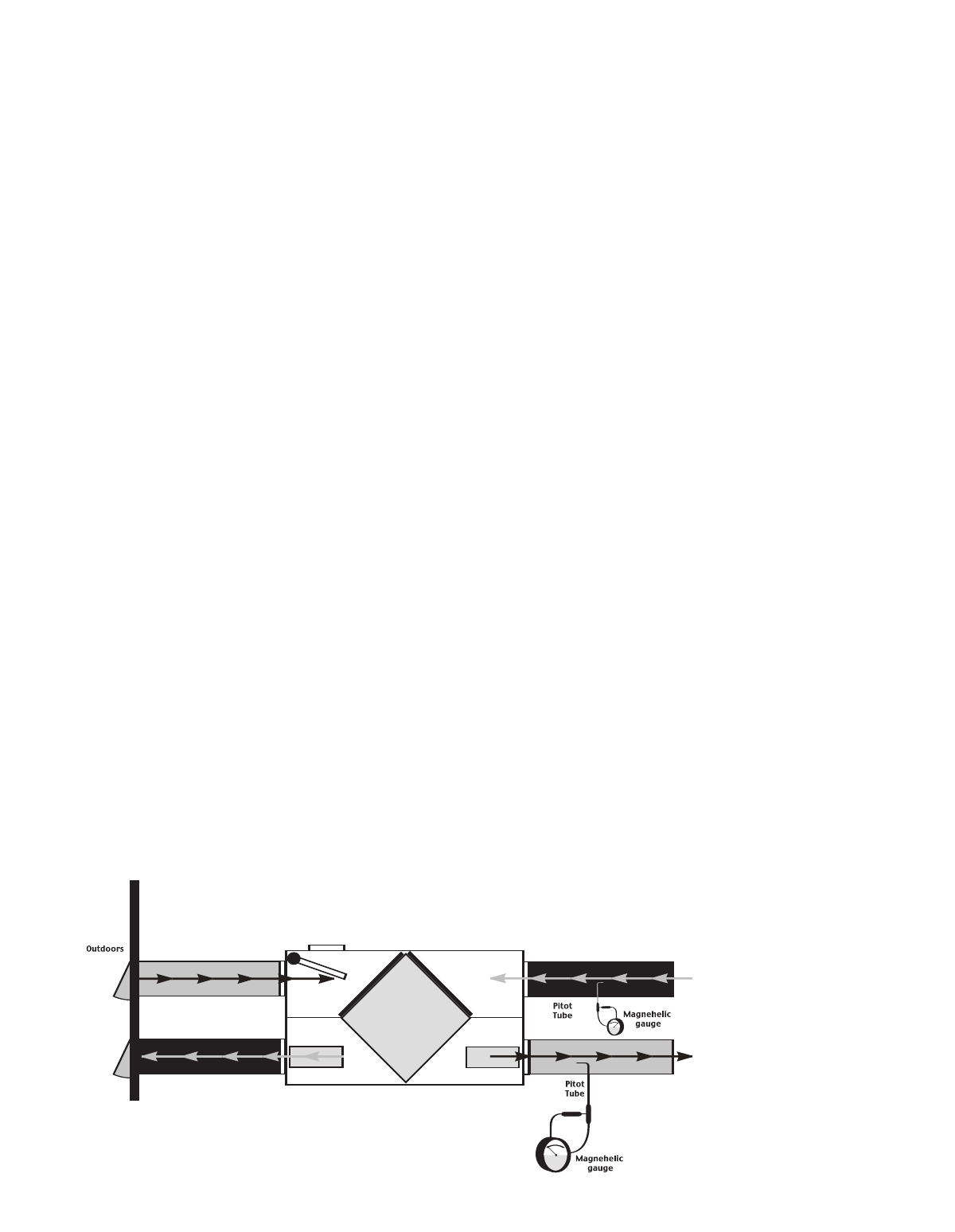
20
AIR FLOW BALANCING
CAUTION
• If the unit’s airflows are not properly balanced...
- The unit may not operate at it’s maximum efficiency.
- Heat recovery core damage may occur.
- The unit’s use could cause negative or positive pressure in your home causing cold air to enter or other combustible equipment to backdraft.
- The unit may not defrost properly.
PITOT TUBE BALANCING PROCEDURE
Magnehelic
M
agnehel
ic
* Pitot tube should be kept at
least 12” away from fans
elbows and dampers to ensure
accurate reading.
* A calibration decal is included
to place over electronic balanc-
ing system adjustments after it
has been balanced.
• The balancing procedure consists of measuring the exhaust air leaving the system and the supply air entering the system and ensuring that these
two are equal. A deviation of 10% or less is acceptable. In such cases, it is recommended to have a greater amount of exhaust air than supply
air as so to increase the supply air’s temperature.
Place pitot tube a minimum of 18" from blower elbows.
Note: Duct connections may
vary, depending on model.
PITOT TUBE
BALANCING PROCEDURE
The following is a method of field balancing an HRV/ERV using a Pitot
tube, advantageous in situations when flow stations are not installed in
the ductwork. Procedure should be perfor
med with the HRV/ERV on high
speed.
The first step is to operate all mechanical systems on high speed, which
have an influence on the ventilation system, i.e. the HRV/ERV itself and
the forced air furnace or air handler if applicable. This will provide the
maximum pressure that the HRV/ERV will need to overcome, and allow
for a more accurate balance of the unit.
Drill a small hole in the duct (about 3/16), three feet downstream of any
elbows or bends, and one foot upstream of any elbows or bends. These
are recommended distances but the actual installation may limit the
amount of straight duct.
The Pitot tube should be connected to a magnehelic gauge or other
manometer capable of reading from 0 to 0.25 in. (0-62 Pa) of water,
preferably to 3 digits of resolution. The tube coming out of the top of the
pitot is connected to the high pressure side of the gauge. The tube com-
ing out of the side of the pitot is connected to the low pressure or ref-
erence side of the gauge.
Insert the Pitot tube into the duct; pointing the tip into the airflow. For
general balancing it is sufficient to move the pitot tube around in the duct
and take an average or typical reading. Repeat this procedure in the
other (supply or return) duct. Determine which duct has the highest air-
flow (highest reading on the gauge). Reduce this airflow using either the
electronic balancing system (if applicable) or damper. The flows should
now be balanced. Actual airflow can be determined from the gauge read-
ing. The value read on the gauge is called the velocity pressure. The
Pitot tube comes with a chart that will give the air flow velocity based
on the velocity pressure indicated by the gauge. This velocity will be in
either feet per minute or meters per second. To determine the actual
airflow, the velocity is multiplied by the cross sectional areas of the
duct being measured.
This is an example for determining the airflow in a 6" duct.
The Pitot tube reading was 0.025 inches of water.
From the chart, this is 640 feet per minute.
The 6" diameter (D) duct has cross sectional area (A) of
A = 3.14 x (D/24) 2
A = 3.14 x (6/24) 2
A = 0.196 or about 0.2 ft
2
The airflow is then: 640 ft/min x 0.2 ft2 = 128 cfm
For your convenience, the cross sectional area of some common round
duct is listed below:
DUCT DIAM. (inches) CROSS SECTION AREA (sq ft.)
5 0.14
6 0.20
7 0.27
8 0.35
The accuracy of the airflow reading will be affected by how close to any
elbows or bends the readings are taken. Accuracy can be increased
by taking an average of multiple readings as outlined in the literature
supplied with the Pitot tube.



